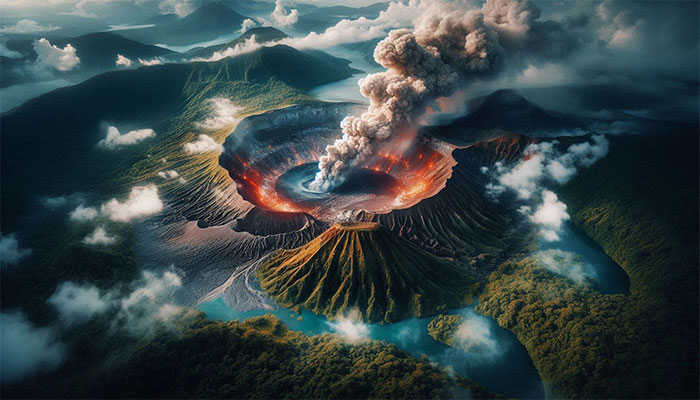Japan develops breakthrough medicine from... volcano crater
A new drug that promises to save millions of lives is being developed based on a discovery made half a century ago in a crater in Cameroon.
A new drug that promises to save millions of lives is being developed based on a discovery made half a century ago in a crater in Cameroon.
Using a method called "reverse synthesis", a research team from the Tokyo Institute of Science (Japan) has found a successful synthesis route for the compounds β-naphthocyclinone and γ-naphthocyclinone , the premise for a breakthrough antibiotic.
According to the World Health Organization (WHO), antibiotic resistance is one of the top health threats. The latest global statistics show that antibiotic resistance caused up to 1.27 million deaths and was linked to another 4.95 million deaths in 2019 alone.
Therefore, humanity always needs to find new antibiotics to replace those that have been overcome by drug-resistant bacteria. And the new work from Japan is highly anticipated.

A pigment produced by bacteria inside a volcanic crater has become the premise for research to find a breakthrough new antibiotic - (Illustration AI: ANH THU).
The premise of the work is a discovery in Cameroon half a century ago, involving Streptomyces arenae bacteria that exist in the soil of a volcanic crater, according to Science Alert.
In 1974, German chemist Axel Zeeck and his Turkish colleague Mithat Mardin demonstrated that the red pigment produced by this bacterium had antibacterial properties, making it an attractive material for pharmacologists to study.
However, to come up with a usable drug, in terms of technology as well as raw material supply, humans must first synthesize related compounds in the laboratory.
These are β-naphthocyclinone and γ-naphthocyclinone. A method is also available to synthesize them in large quantities.
Only now have researchers from the Tokyo Institute of Science been able to complete this work.
As the name "reverse synthesis" suggests , the team sought to break down the complex "machinery" that is the pigment produced by the bacterium Streptomyces arenae , in order to find the basic building blocks for this compound.
From there, they create those building blocks using artificial methods before replicating, and then 'assembling' – that is, synthesizing – them into something similar to what nature did.
Synthesizing antibiotics in the lab could help produce them in larger quantities for medical and research use, since the microbes in the Cameroon volcano certainly can't make enough drugs for all of humanity.
In addition, the process allows scientists to tailor the drug to the way they want to use it, as well as providing a template for synthesizing other drugs with similar structures.
"Further efforts in this direction are underway in our laboratory," said chemist Yoshio Ando, who led the research team.
The study was recently published in the scientific journal Angewandte Chemie International Edition.
- Lightning flashed on the erupting crater in Japan
- America's deepest lake formed from a volcano
- Hawaii: Kilauea volcano creates a dusty column of ashes of up to 9,000 meters
- Vesuvio volcano and Pompeii ruins
- NASA warns 'shark' volcano is about to erupt
- Japanese volcanoes wake up after years of sleep
- Pavlof volcano continued to erupt
- 8 most dangerous hidden volcanoes in the world
- Mother's volcano - Taal Volcano
- The two explorers came down to the
Found a new drug to kill viruses? Lava lake is a rare form of hot water 1,000 degrees C on the crater Science proves: Mars also knows 'deflated' The 70m-wide crater appeared after the explosion lit up the sky Appeared more mysterious craters in Siberia Huge volcano in the bottom of the Antarctic sea Discover the largest crater on Earth Concussion detection: Asteroids bring life to Earth 1.8 billion years ago
